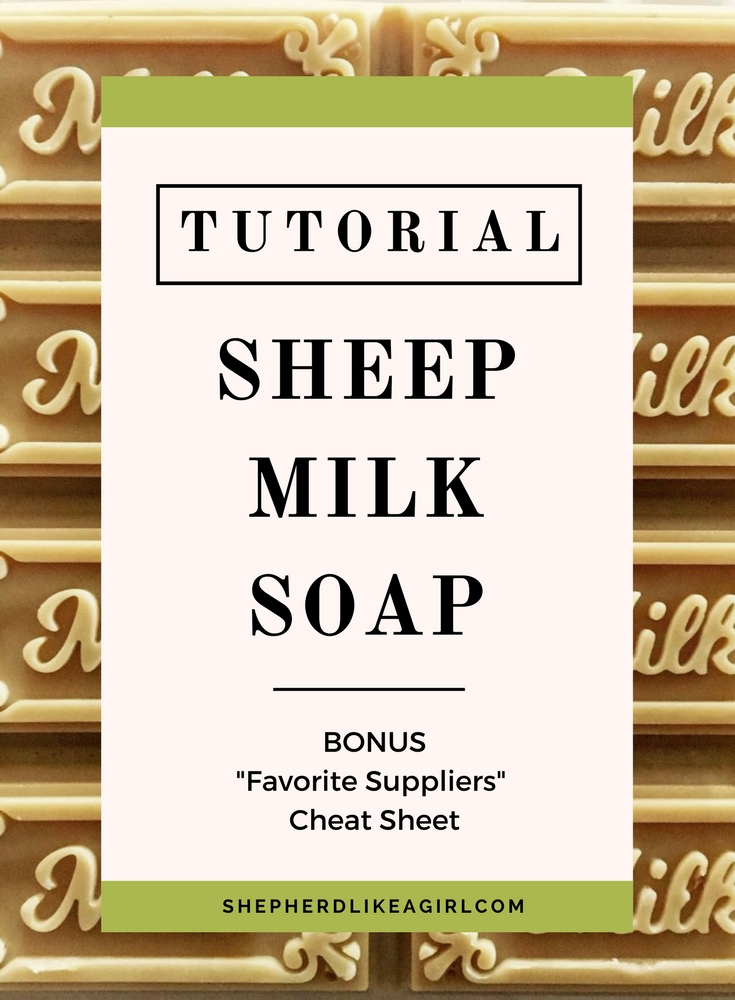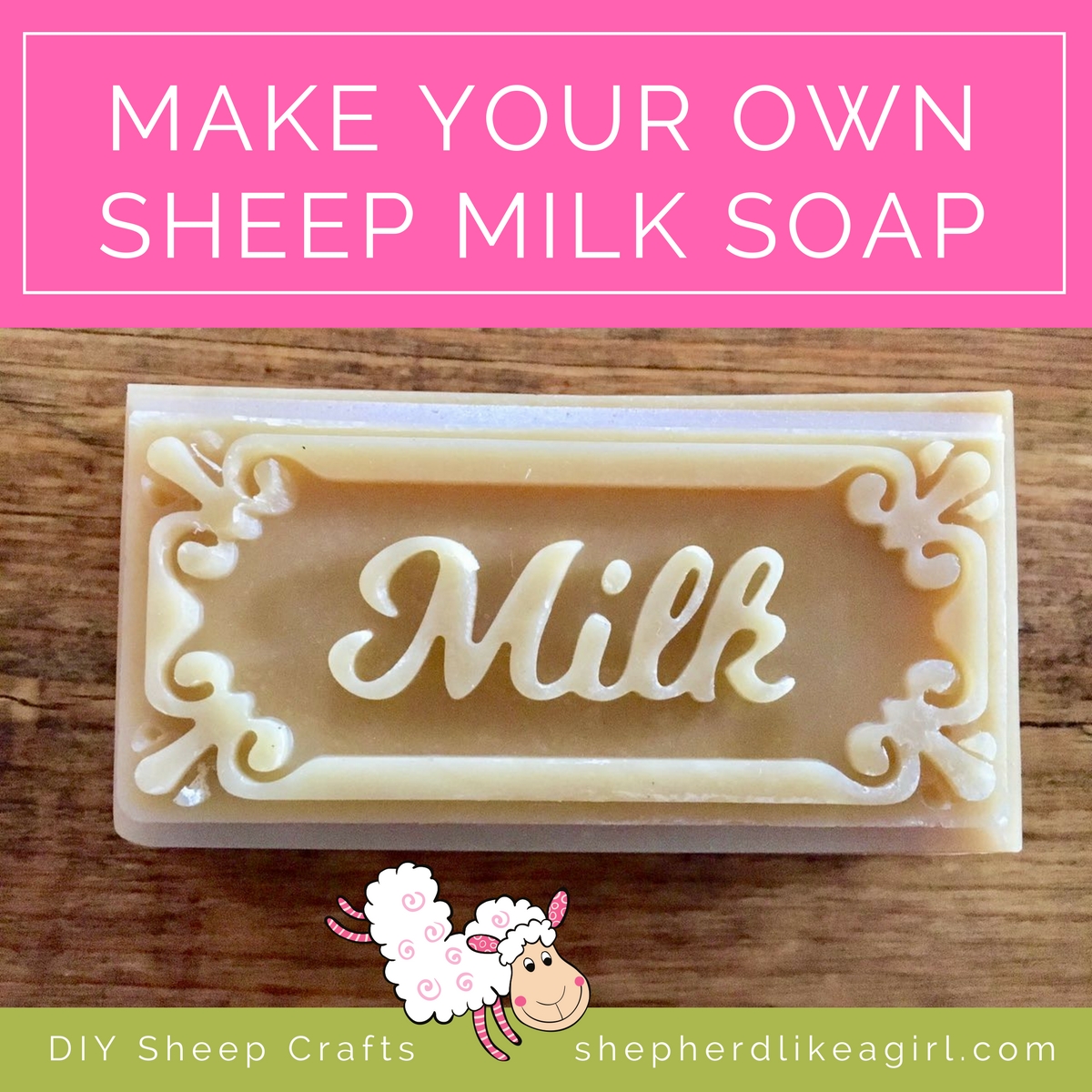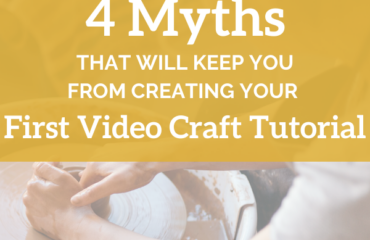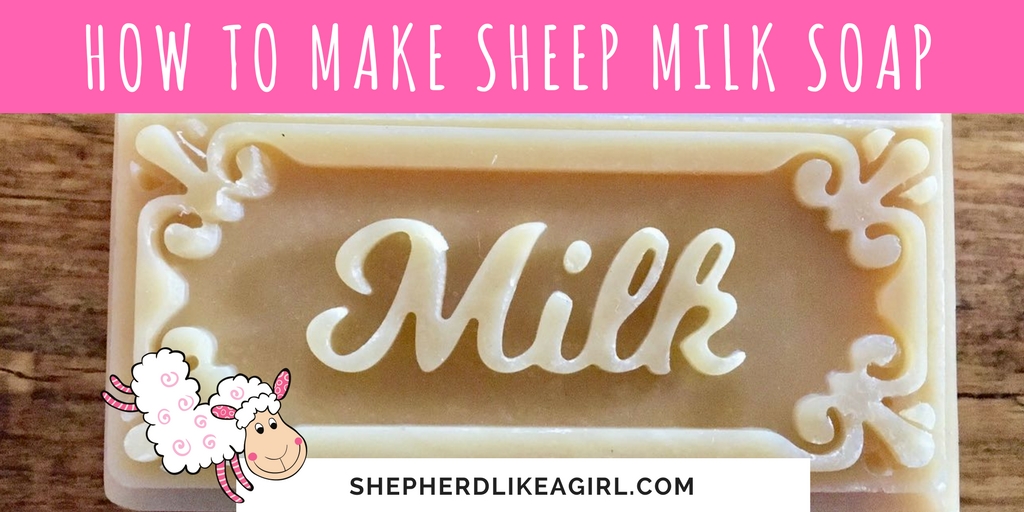
I’m totally into utilizing every raw material my sheep so abundantly provide – sheep milk included! I’m super-stoked to share with you my sheep milk bath and beauty recipes. And this post will be a very special DIY Sheep Craft tutorial, as it is my first tutorial that I am giving to you on using sheep milk!
I am going to take you through all the steps to successfully create your very own, super-awesome Sheep Milk Soap. Seriously, this is all you need to know. Start with this basic recipe and then customize it to make it your own as you get more familiar with the process.
Why add sheep milk to your soap? Get the full scoop on the benefits of using sheep milk in bath and beauty products on my post, 4 Benefits of Sheep Milk for Skin. And please, share this, and all of the DIY Sheep Craft posts on your social media and with your sheep craft loving pals. Thank ewe!
How to Make Sheep Milk Soap
First, you’ll need to go catch a sheep and milk her! Well, hopefully you’ve already taken care of this step and have some clean, pasteurized, and frozen sheep milk on hand. In order to promote easy and fun crafting for myself, I pasteurize one large batch of milk every couple of days during milking season (I typically can get 6 cups of milk from a single Icelandic ewe per day), in a double boiler. I freeze the milk in Ziploc bags in various amounts by weight. Then it’s just grab and go when I’m ready to start a bath and beauty sheep milk project!
I have to tell you, after this past lambing season, my BIG freezer is packed with perfectly packaged, pasteurized sheep milk . It is all just sitting pretty and waiting to be made into something craft-tastic! So, we better get a move on with the soap tutorial, stat!
The REAL first step in this tutorial is to gather your supplies. You can see the list below. But, I also wanted to share with you the exact websites where I get my favorite soap-making supplies. This list is sure to get you started making your own soap, fast! You can download Our Favorite Sheep Milk Soap Suppliers HERE.
Oh yea, and I almost forgot, this recipe is for cold process soap. Cold process, as opposed to hot process, does not use an external heat source to speed along soapification. Translated into English, this means that your soap is going to take 4 to 6 weeks to harden and be ready to use. It’s an eternity, I know! But well worth the wait!
What You’ll Need
For Handling Your Lye
• Nitrile Gloves
• long-sleeved shirt
• Safety Glasses
• heat-resistant pitcher (for lye only)
• spatula (for lye only)
Utensils, Tools & Stuff
• kitchen scale
• freezer paper
• double boiler set-up
• various cups or bowls
• thermometer
• stick blender
For Your Soap Mold(s)
• soap mold(s) – I use two of these “Milk” soap molds
• cooking spray (for seasoning your soap mold)
• space in your freezer
• blanket or bath towel
Ingredients by Weight (yields approx. 5 lbs, or 16 bars of soap)
• 12 oz sheep milk (pasteurized)
• 5 oz distilled water
• 8 oz lye (sodium hydroxide)
• 30 oz olive oil
• 16 oz coconut oil
• 10 oz mango butter (or other butter)
• Optional essential oil(s) or fragrance oil
• Optional colorant (such as Brazilian clay)
8 Steps to Making Sheep Milk Soap
1. Get Your Stuff Together
As any good shepherd knows, it is better to over-prepare (and avoid trouble when possible) than to be caught with your fleece down! Prepare your work surface for safety and easy clean-up by laying out some freezer paper.
You’ll also need to sanitize your stick blender, pots, cups, bowls, soap molds and any utensils you will be using (or think you might be using). I fill my sink with water and add a cap of bleach. Pop all those handy-dandies in for a soak, then remove and let them air dry. If you are pressed for time, you can dry your stuff with several clean paper towels.
Expert Tip: Make double-sure that your soap molds are absolutely dry!
2. Baby, Get Your Lye On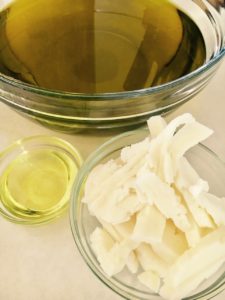
Big Disclaimer: Use extreme caution when handling lye. Use dedicated containers and utensils that are for lye only, and label them as such. Make sure your work area is free of children, pets, and oblivious (but adorable) husbands. Wear Safety Glasses, Nitrile Gloves, and a long-sleeved shirt. Handle the lye solution in a well-ventilated area. Do not breathe the fumes.
Now that I know you read the disclaimer above (cough cough), it is time to get your lye on!
Weigh your lye in the lye only, heat-resistant pitcher. Weigh your distilled water in a separate container. Slowly add the lye to the distilled water and stir until the solution is clear. Set aside to cool.
Wipe your work surface with a wet paper towel to grab any lye beads/flakes that may have escaped.
Expert Tip: I like getting this step out of the way ASAP because it takes seemingly FOREVER for the lye solution to cool enough (between 90 and 110 degrees) to mix into the oils to make… soap (duh)!
3. Heat Things Up!
As I wait for the lye to cool, I start my double boiler, weigh out my oils, and defrost my frozen Ziploc-ed sheep milk in a warm water bath.
Combine your oils and butters in your double boiler and heat until they are liquid. Then, adjust the temperature so that your oils are between 90 and 110 degrees.
Expert Tip: You can experiment with different oils and butters to make a soap recipe that is uniquely yours!
4. Add Lye and Mix
Once your lye and oils are within 10 degrees of each other (and each within the 90 and 110 degree range), slowly pour the lye solution into the oils. Mix for 30 seconds by hand and then 30 seconds with your stick blender ON. Do this until the mixture just barely starts to thicken. This can take a few minutes.
Expert Tip: Make sure your soap molds are dry, seasoned, and sitting close by on your freezer paper!
5. Got Milk?
STOP! This is important: milk, clays, and other additives will rapidly thicken your soap mixture. Work carefully and swiftly through steps 5 and 6!
Pour in sheep milk and optional extra (colorants and/or fragrances). Use the 30 second – 30 second technique in step 4 until there is a light trace. This will happen very quickly!
Expert Tip: A trace is when the mix is thickened to the consistency of pudding. Not jello… I said pudding! It will be harder to make nice soap bars in your mold if the consistency gets too thick.
6. Get In The Mold
Pour the mixture into your molds. This recipe will fill two of these “Milk” Soap Bar molds. Lift up each mold and tap, tap, tap to get all the air bubbles out. Best to tap even more. Keep tapping!
Expert Tip: To prep my silicone molds for easy un-molding, I season them with a light spray of cooking oil. I love to see all of the crisp details in my soap mold design, and this tip helps a TON!
7. Bundle Up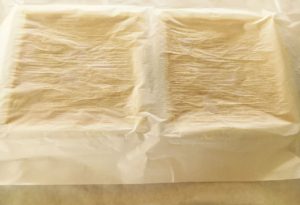
Cover your soap with freezer paper to avoid “ash” forming on the open surface. Then cover that with a towel or blanket to hold in the heat. This ensures your soap goes though the gel phase. Alternatively, if you do not want your soap to gel, pop it in the refrigerator. (A subject for another blog post, perhaps?)
Let it sit for 24 to 48 hours before proceeding to Step 8.
Expert Tip: Check your soap every few hours for cracks. If you see a crack starting to form, it is too hot! Simply uncover it.
8. Queue Amazing Soap
To un-mold your soap, first make sure that your soap is solid(ish). You don’t want it completely hard, though, or it will be tough to cut. Flip your mold over and carefully separate the silicone from the soap. You should have something spectacular under there!
Expert Tip: Before un-molding, pop your soap (still in the molds) in the freezer for a couple of hours. This helps the soap slip cleanly from the mold.
Oh yea, don’t forget to download the cheat sheet, Our Favorite Sheep Milk Soap Suppliers, where I reveal the exact soap making supply websites that we use to make awesome sheep milk soaps!
Easy, right? Truth be told, I did re-batch my first soap attempt. Know that that is an option – soap re-batching. Another topic for another blog post!
Enjoy your sheep milk soap in the shower with a wash cloth or loofah for a wicked lather! Your skin will thank you!
I just want you all to know how much I appreciate you being here and sharing all of your crafting journeys with me. I absolutely love hearing from you and seeing all of your awesome crafting project pics!
I’d love to hear about your soap-making experience. Post is comments or join the conversation at the DIY Sheep Crafts Facebook Group.
Shepherd Like a Girl!



